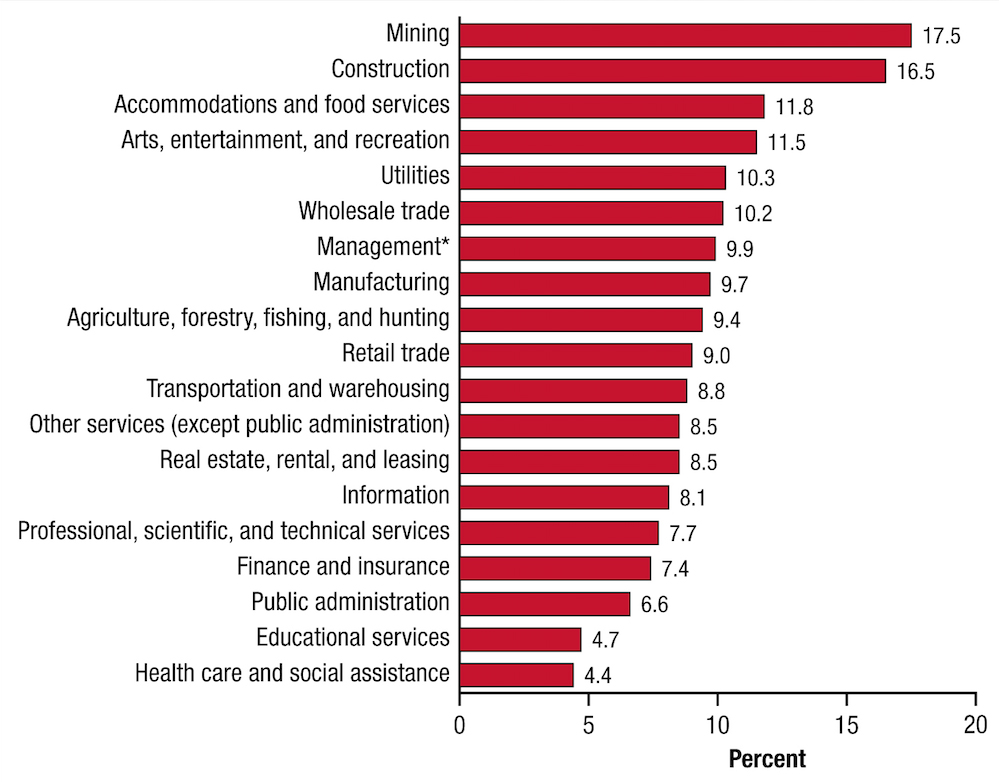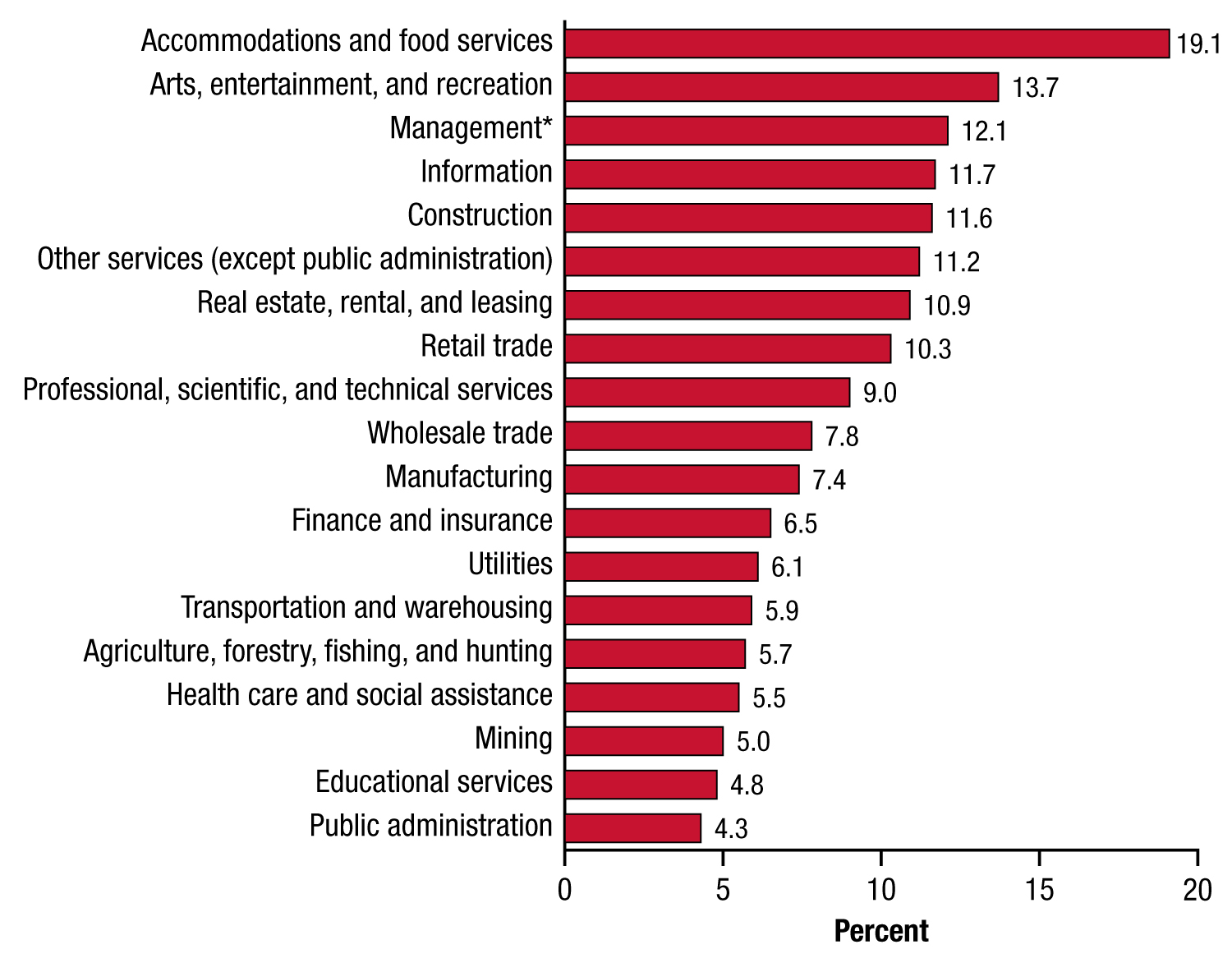Employees of the construction industry ranked second for drinking heavily, and fifth for drug abuse, says a new study by the Substance Abuse and Mental Health Services Administration.
On The Washington Post’s Wonkblog, drug policy reporter Christopher Ingraham writes that drug abuse, including alcohol consumption, costs the U.S. economy billions of dollars in lost productivity annually.
Data show that among the industries with the heaviest drinkers, miners topped the list, with 18% of miners reported “drinking five or more drinks on the same occasion (i.e., at the same time or within a couple of hours of each other) on five or more days in the past 30 days.” Construction workers followed closely at 17%.
Ingraham writes that variation among drug abuse and alcohol consumption across industries does not necessarily have a direct influence with the nature of work. Instead, it has more to do with the types of people who work in them.
“For instance, we know that men drink and do drugs more heavily than women,” he writes. “The researchers write that one reason miners drink so much is that miners tend to be young and male. Construction workers, on the other hand, showed abnormally high heavy drinking rates even after controlling for age and gender.”
The graphs below, by The Substance Abuse and Mental Health Services Administration, show the percentage of drug and alcohol abuse by job.
Percentage of employees who drink heavily:

Percentage of employees who use illicit drugs:

Read more on the latest report on the Substance Abuse and Mental Health Services Administration website.
Related Stories
| Jan 8, 2015
The future of alternative work spaces: open-access markets, co-working, and in-between spaces
During the past five years, people have begun to actively seek out third places not just to get a day’s work done, but to develop businesses of a new kind and establish themselves as part of a real-time conversation of diverse entrepreneurs, writes Gensler's Shawn Gehle.
Smart Buildings | Jan 7, 2015
NIBS report: Small commercial buildings offer huge energy efficiency retrofit opportunities
The report identifies several barriers to investment in such retrofits, such as the costs and complexity associated with relatively small loan sizes, and issues many small-building owners have in understanding and trusting predicted retrofit outcomes.
| Jan 7, 2015
University of Chicago releases proposed sites for Obama library bid
There are two proposed sites for the plan, both owned by the Chicago Park District in Chicago’s South Side, near the university’s campus in Hyde Park, according to the Chicago Sun-Times.
| Jan 7, 2015
4 audacious projects that could transform Houston
Converting the Astrodome to an urban farm and public park is one of the proposals on the table in Houston, according to news site Houston CultureMap.
| Jan 7, 2015
How you can help improve the way building information is shared
PDFs are the de facto format for digital construction documentation. Yet, there is no set standard for how to produce PDFs for a project, writes Skanska's Kyle Hughes.
Smart Buildings | Jan 7, 2015
Best practices for urban infill development: Embrace the region's character, master the pedestrian experience
If an urban building isn’t grounded in the local region’s character, it will end up feeling generic and out-of-place. To do urban infill the right way, it’s essential to slow down and pay proper attention to the context of an urban environment, writes GS&P's Joe Bucher.
| Jan 6, 2015
Construction permits exceeded $2 billion in Minneapolis in 2014
Two major projects—a new stadium for the Minnesota Vikings NFL team and the city’s Downtown East redevelopment—accounted for about half of the total worth of the permits issued.
| Jan 6, 2015
Snøhetta unveils design proposal of the Barack Obama Presidential Center Library for the University of Hawaii
The plan by Snøhetta and WCIT Architecture features a building that appears square from the outside, but opens at one corner into a rounded courtyard with a pool, Dezeen reports.
| Jan 5, 2015
Another billionaire sports club owner plans to build a football stadium in Los Angeles
Kroenke Group is the latest in a series of high-profile investors that want to bring back pro football to the City of Lights.
| Jan 5, 2015
Beyond training: How locker rooms are becoming more like living rooms
Despite having common elements—lockers for personal gear and high-quality sound systems—the real challenge when designing locker rooms is creating a space that reflects the attitude of the team, writes SRG Partnership's Aaron Pleskac.

















